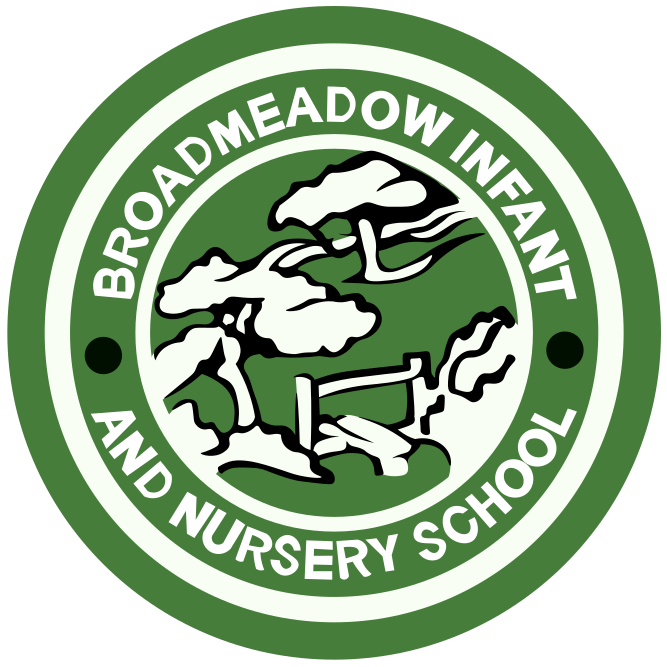Music
Music
Intent
Music at Broadmeadow is seen as one of our key expressions of community. Community is one of our values and part of our vision. Community encourages confidence and inclusion of all of our pupils and our wider community. At Broadmeadow, our music sessions allow all pupils to have the opportunity to express themselves and to develop these skills.
Music is a constant accompaniment to our lives with access to digital music at the touch of our fingertips. Music can motivate and comfort us, inspire us in our thinking and reflect images and moods. It is our aim at Broadmeadow to explore the journey of musical communication; from a fleeting idea in the mind of a composer, through the precise and accurate organisation of sounds and instruments, to a performance moment and appreciation by an audience. In doing this, children should know that music contributes to important occasions in their own lives and in other cultures around the world and have opportunities to develop their own composition, performance and listening skills. Music at Broadmeadow is a joyful experience and it is our intention that children’s learning of music remains a skill for life.
Implementation
Music lessons at Broadmeadow engage and inspire pupils to develop a love of music and so increase their self-confidence, creativity and sense of achievement. The vast majority of lessons are practical learning activities. The children at Broadmeadow learn to respect all instruments they are using during these practical lessons. Respect is one of our School Values which we promote and encourage every day. In Key stage 1, the children are taught to use their voices expressively and creatively by singing songs and speaking chants and rhymes. They play tuned and untuned instruments musically, following instructions. They explore the inter-related dimensions of music and listen with concentration and understanding to a range of high-quality live and recorded music. Composition tasks give them the opportunity to experiment with creating, selecting and combining sounds to imitate and communicate a particular creative idea. We take advantage of Services for Education music specialists who deliver weekly music lessons and the Charanga music programme for class music activities. We offer opportunities for performance during assemblies, our Christmas Performance and our Spring Concert.
Key Concepts
The key concepts that are studied and revisited in music in each year group are:
|
Concept |
Explanation |
|
Melody |
Melody is formed from a succession of single notes; it is combined with rhythm to make a tune. Melody can be created using steps and leaps. The collection of notes from which a melody is formed is called a scale. |
|
Harmony |
Harmony is the sound made by two or more notes simultaneously. These combinations are sometimes called chords. Harmony can sound pleasing to the ear or clashing, depending on the notes used. We use harmony when we play chords on the ukulele. |
|
Pitch |
Pitch is the sound of a single note in relation to other notes. Words which can describe the pitch include: high, low, treble, bass, sharp or flat. |
|
Tempo |
Tempo is the speed of a piece of music. The tempo can change during a piece. The tempo describes the pulse or beat of the music. Sometimes we use Italian words to describe the tempo such as lento, which means slow, or allegro, which means lively. |
|
Dynamics |
Dynamics are used to describe the volume of one or more notes in a piece of music. The dynamics can change gradually or suddenly. Symbols known as dynamic markings, based on Italian descriptions, are often used such as f for forte which means ‘strong’ or ‘loud’. |
|
Structure |
Structure is the overall framework of a piece of music. The structure of a song will usually have an introduction, some verses and a chorus. |
|
Texture |
The texture of a piece of music describes how the different sounds are being woven together. A thick texture uses several ideas at once. A thinner texture will have fewer parts. For example a whole class singing ‘Frere Jacques’ is a thin texture. A few children singing the same song as a four-part round, starting at different times, will create a thicker structure. |
|
Timbre |
Timbre is the unique sound quality which helps us to distinguish between different instruments and voices. The different ways an instrument is played can change its timbre. |
|
Rhythm |
Rhythm is the organisation of long and short sounds around a pulse or beat. Some rhythms coincide with the beat; others use syncopation, in which most of the sounds fit between the main beats. |
|
Composing |
Composing occurs when you select and organise sounds to make music. Good compositions have an intention which is successfully communicated to the audience. |
|
Performing |
Performing is the act of making music for an audience at a particular time and place. Most performances need to be practised. |
|
Notation |
Notation is the method used to record, on paper or on screen, music that is heard or performed. A musician needs to read and write notation to share ideas. There are several different types of standard notation. |
Key vocabulary and terms are learnt during each theme and revisited as appropriate in subsequent years.
Impact
Our music provision develops children’s personal confidence in vocal and instrumental performing skills, underpinned by good aural ability and the knowledge and understanding of various music notations and traditions.
We know our children have progressed in music when:
- They can make connections between the music they have heard and their own life experiences and learning in other subjects
- They are happy to perform in front of their peers and at events
- They are able to teach themselves or friends a new piece of music independently
- They can organise sounds for a purpose, in a structure, communicating ideas effectively.
